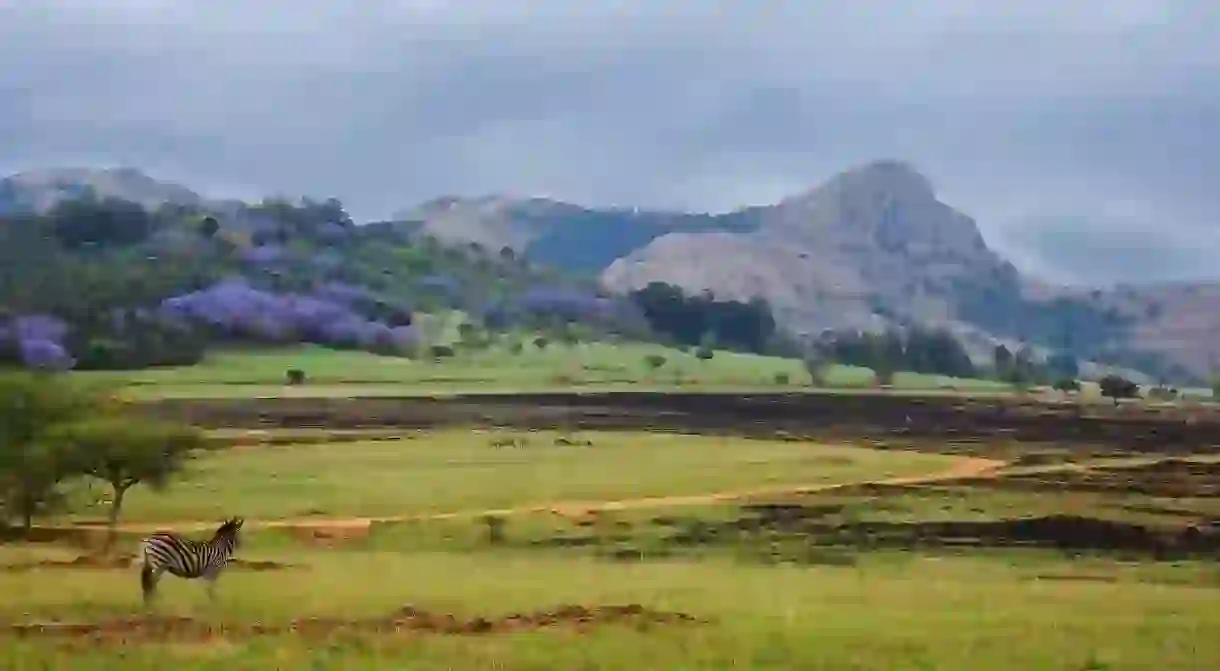Top Things to Do in Swaziland

Traditional culture, wildlife, and awe-inspiring scenery all mingle together with Swaziland’s fresh mountain air, conjuring up a heady concoction of sensory pleasure that is deeply pleasing to the soul. Although tiny, the Kingdom of Swaziland packs a powerful punch, with a host of things to keep visitors busy. Here are some of the highlights.
Track rhino spoor
Natural Feature

The Hlane Royal National Park is the biggest conservancy area in Swaziland and is well stocked with white rhinos and elephants. Their tracking tour is a unique opportunity to seek out critically endangered white rhinos as well as elephants while learning more about the habitat and personalities of these amazing creatures. The guided walking trails are located in the Ndlovu Camp and bring walkers into close contact with the wilderness.
Admire the art of glass blowing
Shop

The Ngwenya Glass Factory forms the central hub of an arts and crafts village in Swaziland where visitors can watch craftspeople at work as they shape and mold molten glass into a variety of gorgeous pieces. Approximately 1,100 pounds (500 kilograms) of recycled glass a day are crushed down and melted before upcycling begins and the hot glass lava is transformed into new and beautiful shapes. The factory encourages members of the community to collect discarded glass objects and bring them to the factory in return for payment, thus providing an innovative social upliftment programme too.
Take a cruise on Maguga Dam
Natural Feature

Slow down with a boat cruise on Maguga Dam. This scenic and serene piece of water lies in the heart of the Hhohho region in Swaziland, cloaked in the magic of the Swazi highlands. The dam is surrounded by the Makhonjwa Mountains. These are some of the oldest in the world and form part of the Barberton Greenstone Belt, a unique remnant of the ancient Earth’s crust containing the oldest and best-preserved sequence of volcanic and sedimentary rocks on the planet. Brilliantly preserved Nsangweni rock art can be found hidden in rock faces, and the dam is a great fishing and birding spot.
Learn the meaning of Yebo Nkosi
Museum

Mantenga cultural village is a large family homestead comprising 16 huts with separate enclosures for cattle and goats. Each living areas has its own particular purpose and the structures are all made of traditional building materials such as wooden poles, leather strips, grass, reeds, earth and dried cow dung. Many of the villagers wear traditional attire and visitors are warmly welcomed with the customary Swazi family greeting of Yebo Nkosi. Tours include a guided walk, a dancing display, and time to browse the village and its traditional artifacts.
Browse the Manzini market
Market

The village of Manzini’s main tourist draw card is a colorful and lively market filled with community crafts and unique goods. The bohemian and eclectic space is typical of an African market, with a lively buzz and a versatile mix of traditional and contemporary goods. Handicrafts from Swaziland and elsewhere in Africa are all on display with many of the stalls operated by women who manufacture their wares at their villages and make their way to the market to sell them.
Stroll the streets of Mbabane
Natural Feature

Mbabane is Swaziland’s largest city. It is filled with activity and houses an interesting mixture of tradition and modernity. There are a number of shops as well as colorful market stalls selling items such as fruit, souvenirs, and traditional medicine. Set against the picturesque Diangeni Hills, the town has a relaxed atmosphere and is a good place to recharge and unwind. It is also home to the Waterford-Kamhlaba United World College and this international school’s campus is one of the most beautiful sights in the city.
Fulfil your wildlife safari dreams
Natural Feature

The Mkhaya Game Reserve is a wildlife-rich area located in the Lowveld region of Swaziland. The pristine wilderness holds much rare and endangered wildlife including black rhinos, the pure Swazi Nguni breed of cattle, Tsessebe, white rhinos, and an exquisite selection of bird species. Book a full-day game drive that takes place in an open Land Rover as you are guided through the beautiful African bush in search of four of the Big Five and other impressive wildlife. Mkhaya also boasts a highly effective anti-poaching unit that is funded entirely through revenue generated by visitors and assists in sustaining this unique conservation effort.
Stock up on candles
Store

From humble beginnings in an old cowshed, today the Swazi Candle Factory exports candles throughout the world that are renowned for their handcrafted beauty. On any given weekday, visitors can watch approximately 200 craftspeople as they go about the process of moulding the pigment-colored wax into fascinating shapes and sizes, ranging from traditional-looking candles to African animal forms. Each candle is hand-finished, meaning that no two candles will ever look exactly the same. Swazi Candles is a favourite stop for visitors looking for gifts and souvenirs to take home with you.
Walk to Sibebe Rock
Natural Feature

Imposing Sibebe Rock is located just northeast of Mbabane and ranks as the world’s second-largest monolith, after Uluru in Australia. The massive granite dome is hard to miss as it looms over the surrounding countryside with sheer rock faces that offer daring challenges to thrill-seeking hikers. Those that don’t want to scramble along the rock face can simply take a scenic stroll to the mountain.













